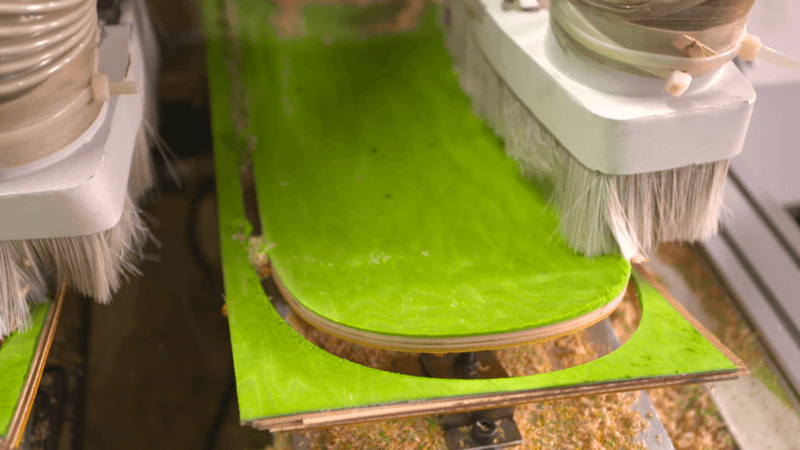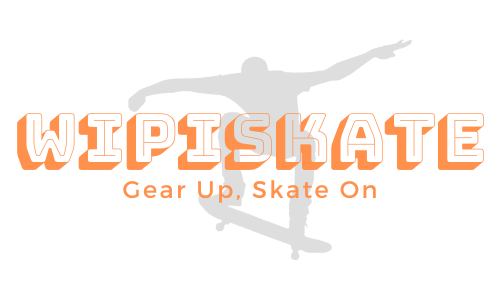No products in the cart.
Blog
Custom Skateboard Printing: A Guide to Custom Prints
In the dynamic realm of skateboarding, custom skateboard printing emerges as a vibrant avenue for personal expression. In this blog, we will discover the diverse methods, materials, and sustainability aspects that define this unique practice. From bold screen prints to intricate digital masterpieces, custom skateboard printing transforms skateboard decks into canvases, allowing skaters to weave their unique narratives and showcase their individuality.
Definition of Custom Skateboard Printing
Custom skateboard printing refers to the process of applying unique designs, graphics, or artwork onto skateboard decks according to individual preferences. This customization allows skateboarders to express their personality, brand identity, or artistic vision through their boards.

Methods of Printing on Skateboard Decks
- Screen Printing: The Classic Choice: Screen printing is the OG of custom skateboard printing methods. Picture this: each color in your design gets its own screen, ensuring those vibrant hues pop like fireworks against the concrete jungle. It’s cost-effective for bulk orders and perfect for those bold, punchy designs. Just watch out for setup costs—they can ramp up if your design is more intricate than a kickflip.
- Digital Printing: The High-Tech Maverick: Meet digital printing, the rebel of the custom skate scene. No screens, no limits. With digital printing, your deck becomes a canvas for intricate details and photo-realistic graphics. It’s like unleashing a digital masterpiece onto four wheels. While it’s a bit pricier for big batches, it’s perfect for those one-of-a-kind creations that demand attention.
Pros and Cons of each printing method
Screen Printing:
- Pros:
Vibrant colors and sharp details will make your design pop.
Cost-effective for bulk orders, perfect for outfitting your squad.
Ideal for designs big or small, from minimalistic logos to full-blown art pieces.
- Cons:
Setup costs can be a buzzkill, especially for complex designs.
Limited color blending means you’ll need to keep it simple for the best results.
Not the best choice for super intricate designs—leave the fine lines at home.
Digital Printing:
- Pros:
High-resolution prints that bring your wildest ideas to life with crystal clarity.
No setup costs mean you can dive straight into customizing without breaking the bank.
Perfect for complex designs and photo-realistic graphics that demand attention.
- Cons:
Color accuracy might not be as spot-on as screen printing, so keep an eye on those shades.
Durability could be a concern for hardcore shredders—keep your eye on the wear and tear.
While it’s a champ for unique designs, it can get pricey for big batches.
Materials for Custom Printed Skateboard Decks
- Maple Wood: Traditional skateboard decks are commonly made from maple wood. Maple offers a good balance of strength, durability, and flexibility, making it suitable for various skateboarding styles.
- Bamboo: Bamboo decks are gaining popularity due to their lightweight nature and eco-friendly properties. Bamboo offers flexibility and strength comparable to maple, making it a viable alternative material.
- Carbon Fiber: Carbon fiber decks are lightweight and extremely durable, making them suitable for high-performance skateboarding. However, they tend to be more expensive than traditional wood decks.
- Composite Materials: Some decks use composite materials like fiberglass or carbon fiber reinforced polymers. These materials offer unique performance characteristics but may not be as readily available as wood-based decks.

How Material Choice Impacts Printing Quality and Durability
- Printing Quality: The choice of deck material can significantly impact the quality of your custom print. Maple decks, with their smooth surface and consistent texture, provide an ideal canvas for vibrant and detailed designs. Bamboo, while slightly more porous, offers a unique canvas that adds depth and character to your artwork. Composite materials, with their versatility and precision engineering, allow for intricate designs that push the boundaries of what’s possible.
- Durability: When it comes to durability, maple reigns supreme. Its sturdy construction and resilience to wear and tear make it a reliable choice for skaters who put their decks through the wringer. Bamboo, while not as robust as maple, offers a lightweight and flexible alternative that’s perfect for cruising and freestyle riding. Composite materials, with their high-strength properties, provide unmatched durability for those seeking maximum performance and longevity.
Sustainable Options for Environmentally Conscious Skaters
- Bamboo: Bamboo decks stand out as a sustainable option for environmentally conscious skaters. Bamboo is a fast-growing renewable resource that requires minimal water and pesticides to thrive, making it an eco-friendly alternative to traditional maple decks. By opting for a bamboo deck, you’re not only reducing your environmental footprint but also supporting sustainable forestry practices.
- Recycled Materials: For those looking to take sustainability to the next level, recycled materials offer a greener alternative to traditional deck construction. Some companies are pioneering the use of recycled plastics, wood fibers, and other reclaimed materials to create skateboards that not only perform well but also minimize waste and resource consumption.
Conclusion
Custom skateboard printing is more than just a method of adding flair to boards; it’s a reflection of individuality and creativity within the skating community. Whether utilizing screen printing for bold designs or digital printing for intricate artwork, skaters have the freedom to express themselves fully
I am Jasper Thorn, a man passionate about skateboarding. My heart does kickflips and ollies with the rhythm of the wheels on concrete. Every trick, every grind, and every flip tells a story of adrenaline and freedom. I’m always out there, turning every skatepark into my playground, painting it with my awesome moves.
